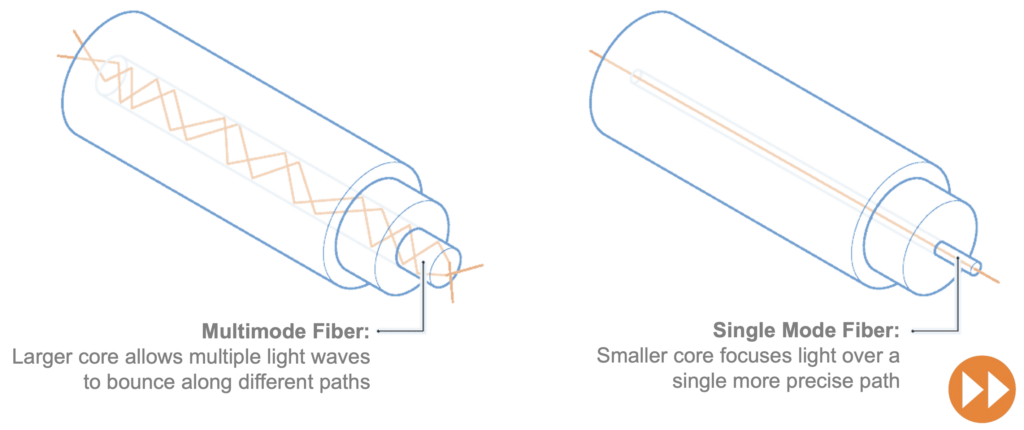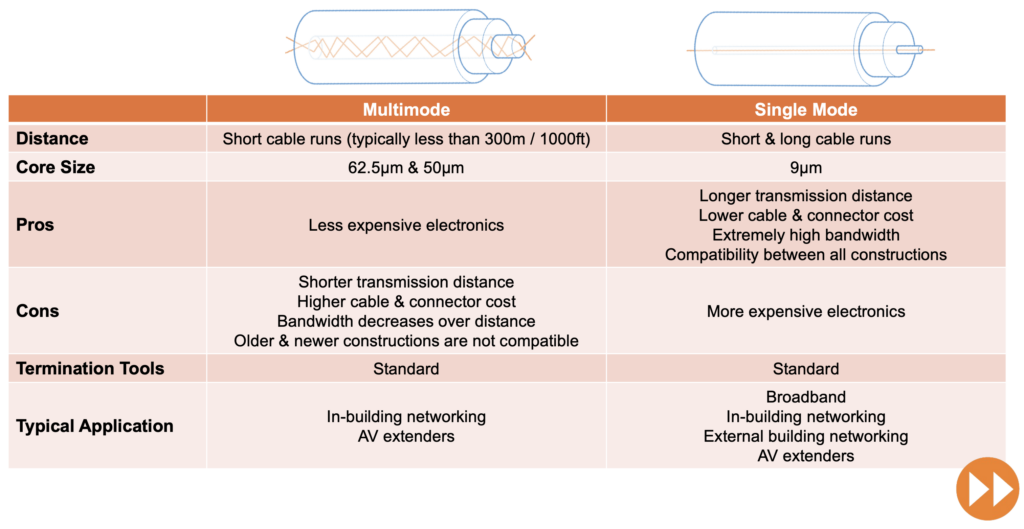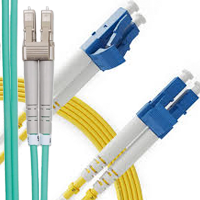What’s the difference between single mode and multimode fiber? More importantly, which cable should I use in my installation?
These are two of the most common questions we’re asked by integrators when designing a fiber optic installation. In some cases the answer is easy: any cable installed before the modem needs to be single mode. But if you’re running network, security or audio/video links the answer might be a little more complicated. This article examines the differences.
Differences in Construction
First the basics…. single mode fiber is designed to propagate a single light mode whereas multimode supports multiple simultaneous light modes. This difference impacts bandwidth, signal transmission distance and signal stability.
Additionally, single mode and multimode cables are built differently. The optical core in a single mode cable is 9µm and the optical core in a modern multimode cable is 50µm, though older fiber cables (specifically OM1 rated cables) features a 62.5µm core.
The smaller core size in single mode leads to lower attenuation and therefore longer transmission distances and higher bandwidths. The physics are straight forward: a smaller pipe means less signal reflection.

Differences in Bandwidth
If bandwidth is important to you — and it should be — single mode is the clear winner. Single mode cables support brighter, more power light sources with lower attenuation. Plus, a single light mode provides theoretically unlimited bandwidth.
Multimode, on the other hand, relies on the transmission of multiple light modes with less brightness and higher attenuation. This caps the bandwidth and leads to five grades of multimode fiber each with difference bandwidth and distance capabilities.
Today’s modern, high-bandwidth electronics typically rely on single mode OS2, multimode OM4 or multimode OM5 cable construction. The below chart shows traditional cable colors, core sizes and compatibility by grade.

Differences in Distance
Fiber transmission distance is largely dependent on the electronics and their light output, but in practice we find single mode also outperforms multimode. Single mode fiber supports short distance transmission and long distance transmission regardless of signal bandwidth and/or resolution (such as 1080p, 4K and 8K video). Most electronics will transmit up to 10km (6.2 miles) over a standard single mode cable.
Multimode, on the other hand, has a much shorter maximum transmission distance that’s affected by cable grade. We typically find the max distance between 300m – 550m (1,000 – 1,800 feet).
Differences in Cost
Given the clear advantages of single mode fiber as indicated above, you’d think single mode cables would be more expensive than multimode cables. And that’s surprisingly not the case. Single mode fiber is more efficient to manufacture, leading to an average of 30% savings over multimode fiber.
The catch is single mode electronics tend to cost more due to stronger light sources and more intricate optical processors. The actual cost varies between device and manufacturer; however, 30% tends to be the average cost difference.
Picking a Cable
So what’s better? Single mode or multimode fiber? Well, they are different…. Single mode cable is less expensive, supports higher bandwidths and longer distances; however, the cost of electronics is greater.
Most electronics will support either cable type provided the proper transceiver module is used and distance limitations are respected, though it’s always best to check with your intended device prior to integrating a cable.
Whichever cable you choose, keep in mind that single mode and multimode cables shouldn’t be passively connected. The large multimode core won’t match the smaller single mode core, resulting in signal killing optical loss.
The team at Future Ready Solutions will help you work through the fiber optic cable selection process. Additional information is available online.


